The Best 7 DSLR Cameras for Beginners in the World
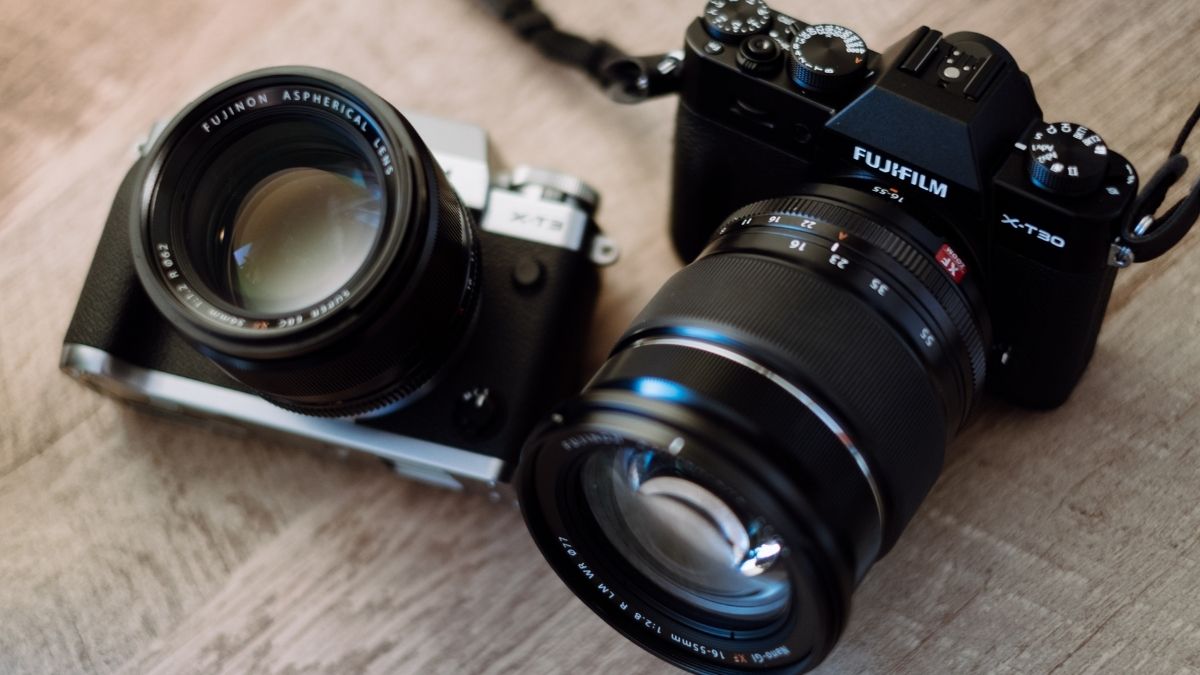
Introduction:
Today’s review is about the 7 best DSLR cameras for beginners in the world. Entering the world of photography can be both exciting and overwhelming. Especially when considering the array of DSLR (Digital Single-Lens Reflex) cameras available. For beginners, finding the right DSLR that balances quality, and features. We delve into the seven top DSLR cameras tailored for those starting their photographic journey.
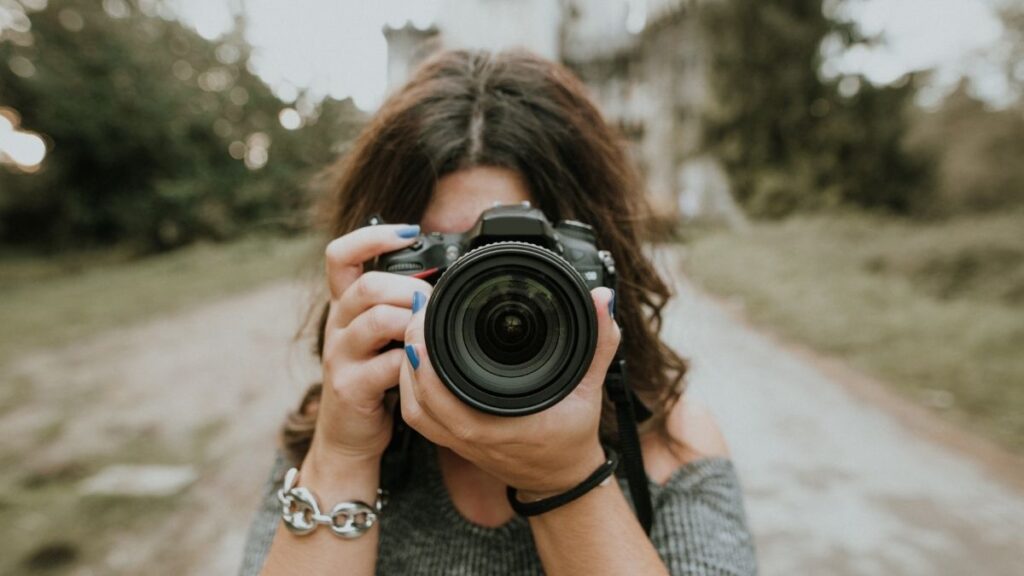
Below are the Best 7 DSLR Cameras for Beginners in the World:
1. Canon EOS Rebel T8i
Product Specification:
- 24.1MP APS-C CMOS Sensor
- DIGIC 8 Image Processor
- 45-Point All Cross-Type AF System
- 7fps Continuous Shooting
- 4K UHD Video at 24p
- Built-in Wi-Fi and Bluetooth
Product Description:
Canon’s EOS Rebel T8i stands out for its interface, making it an ideal choice for beginners. With impressive autofocus capabilities and high-resolution imagery, it ensures crisp and vibrant photos. Its 4K video capability adds versatility to its functionality. Catering to budding videographers as well.
Expert Opinion:
Renowned photographers commend the T8i for its intuitive controls. Impressive autofocus system, making it an excellent choice for beginners. Looking for a seamless transition into DSLR photography.
Pros:
- Excellent autofocus system
- User-friendly interface
- Versatile for both photography and videography
Cons:
- Limited 4K video options
- Lacks in-body stabilization
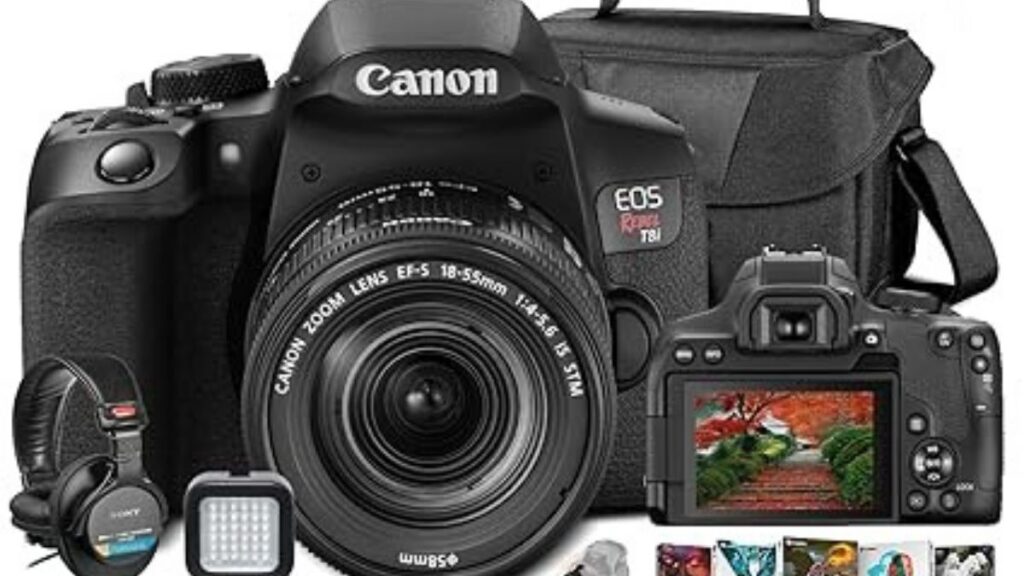
2. Nikon D5600
Product Specification:
- 24.2MP APS-C CMOS Sensor
- EXPEED 4 Image Processor
- 39-Point Multi-CAM 4800DX AF System
- 5fps Continuous Shooting
- Full HD 1080p Video Recording at 60fps
- Built-in SnapBridge Connectivity
Product Description:
The Nikon D5600 boasts a compact and lightweight design. Making it easy for beginners to handle without compromising on image quality. Its impressive battery life and articulating touchscreen offer flexibility. Enabling users to explore various angles and compositions.
Expert Opinion:
Industry experts hail the D5600 for its excellent image quality, and interface. The availability of a vast range of compatible lenses. Empowers beginners to explore their creativity.
Pros:
- Great image quality
- Articulating touchscreen
- Compatibility with a wide range of lenses
Cons:
- Limited 4K video capability
- No in-body stabilization

3. Sony Alpha a6100
Product Specification:
- 24.2MP APS-C Exmor CMOS Sensor
- BIONZ X Image Processor
- 425-Point Phase-Detection AF System
- 11fps Continuous Shooting
- 4K UHD Video Recording at 30fps
- Real-Time Eye AF and Tracking
Product Description:
Sony’s Alpha a6100 offers an impressive autofocus system. Particularly beneficial for capturing moving subjects. Its compact size and advanced technology make it attractive. Choice for beginners venturing into both photography and videography.
Expert Opinion:
Experts appreciate the a6100’s rapid autofocus system. Its ability to capture stunning images even in challenging lighting conditions. Makes it a top recommendation for beginners.
Pros:
- Fast and accurate autofocus
- Compact and lightweight
- Excellent low-light performance
Cons:
Limited touchscreen functionality
Smaller lens selection compared to competitors
4. Pentax K-70 DSLR cameras for beginners
Product Specification:
- 24.2MP APS-C CMOS Sensor
- PRIME MII Image Processor
- SAFOX X 11-Point AF System
- 6fps Continuous Shooting
- Full HD 1080p Video Recording at 30fps
- In-body Shake Reduction
Product Description:
The Pentax K-70 stands out for its weather-sealed body, making it a robust option for beginners interested in outdoor photography. Its in-body shake reduction feature reduces the need for stabilized lenses, adding to its appeal.
Expert Opinion:
Photographers laud the K-70’s durability and weather-resistant build, making it a solid choice for beginners exploring nature and adventure photography.
Pros:
- Weather-sealed body
- In-body shake reduction
- Excellent handling and controls
Cons:
- Limited autofocus points
- Smaller lens ecosystem compared to competitors
5. Canon EOS 90D
Product Specification:
- 32.5MP APS-C CMOS Sensor
- DIGIC 8 Image Processor
- 45-Point All Cross-Type AF System
- 10fps Continuous Shooting
- 4K UHD Video Recording at 30fps
- Dual Pixel CMOS AF
Product Description:
With its high-resolution sensor and advanced autofocus system. The Canon EOS 90D offers excellent image quality and versatility. Its ability to shoot 4K videos and a swiveling touchscreen further enhances. It appeals to beginner videographers.
Expert Opinion:
Professionals recommend the EOS 90D for its impressive image quality. Fast autofocus, and 4K video capability. Making it a well-rounded choice for beginner photographers and videographers alike.
Pros:
- High-resolution sensor
- Fast and accurate autofocus
- 4K video recording
Cons:
- Relatively bulky body
- Limited native lens selection
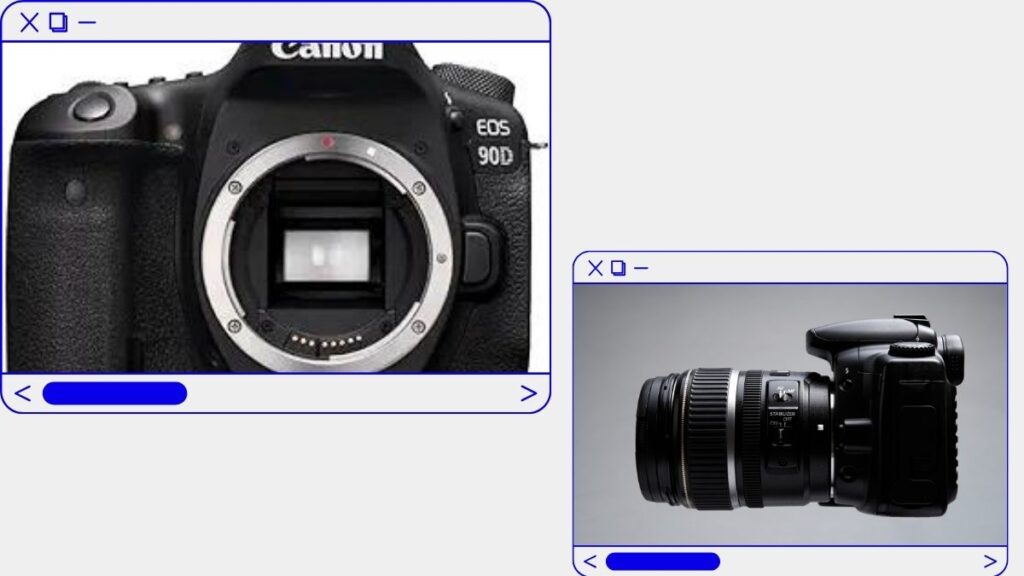
6. Nikon D3500
Product Specification:
- 24.2MP APS-C CMOS Sensor
- EXPEED 4 Image Processor
- 11-Point Multi-CAM 1000 AF System
- 5fps Continuous Shooting
- Full HD 1080p Video Recording at 60fps
- Guide Mode for Beginner
Product Description:
The Nikon D3500’s Guide Mode makes it an ideal entry-level DSLR. Providing beginners with step-by-step help in understanding camera functions. Its lightweight and ergonomic design, paired with excellent image quality.
Expert Opinion:
Experts praise the D3500 for its simplicity and effectiveness in helping beginners understand. Making it a top recommendation for those starting their photographic journey.
Pros:
- Beginner-friendly Guide Mode
- Lightweight and compact
- Excellent image quality
Cons:
- Fixed rear LCD screen
- Limited video capabilities
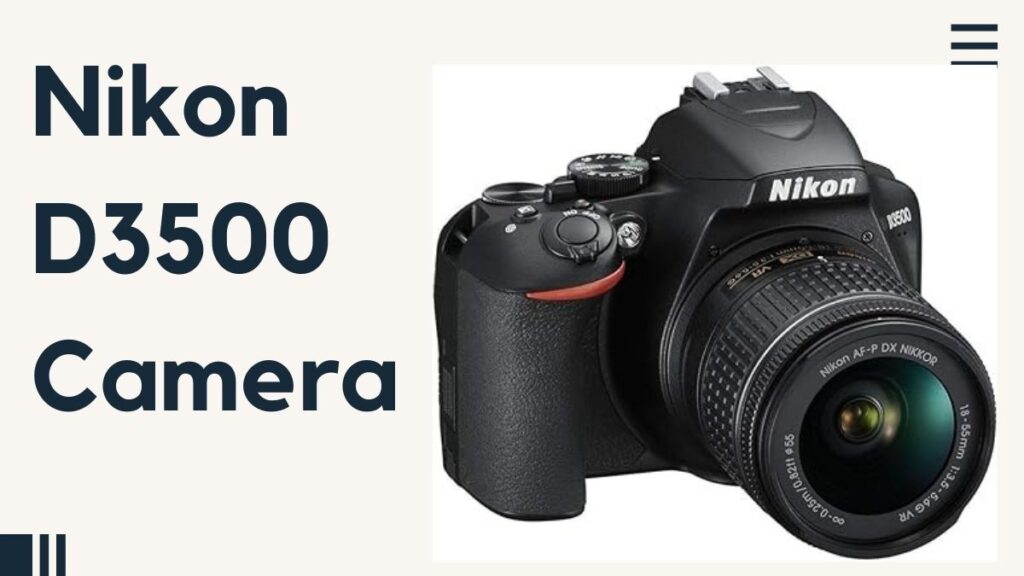
7. Sony Alpha a6000
Product Specification:
- 24.3MP APS-C Exmor APS HD CMOS Sensor
- BIONZ X Image Processor
- Fast Hybrid AF System with 179 Phase-Detection Points
- 11fps Continuous Shooting
- Full HD 1080p Video Recording at 60fps
- OLED Electronic Viewfinder
Product Description:
The Sony Alpha a6000’s compact size, and fast autofocus system. Impressive image quality makes it an excellent choice for beginners. Seeking a portable yet high-performing camera for various shooting scenarios.
Expert Opinion:
Professionals commend the a6000 for its fast and accurate autofocus and compact build. Making it an ideal option for beginners exploring different photography genres.
Pros:
- Compact and lightweight
- Fast autofocus system
- Excellent image quality
Cons:
- Limited touchscreen functionality
- Aging design compared to newer models
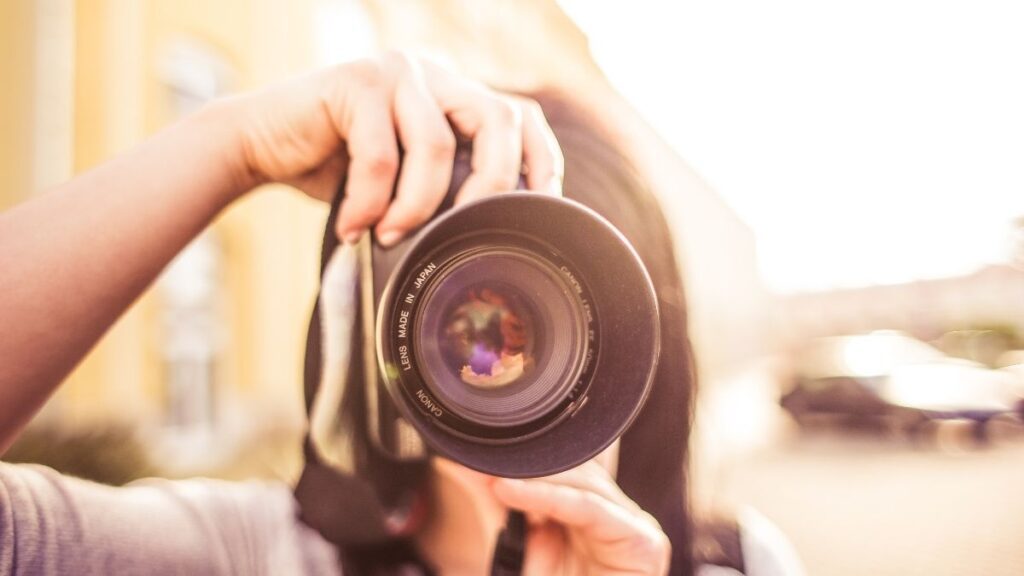
How do we understand that these cameras are better than other cameras?
Determining whether a specific set of DSLR cameras is better than others involves. Considering various factors and evaluating them against your specific needs and preferences. Here are some key points to help understand. Why certain cameras might be considered better than others:
Performance Metrics
1. Image Quality: Assess the image sensor size, megapixels, dynamic range, and low-light performance. Cameras with larger sensors generally produce higher image quality.
2. Autofocus System: Look for the number of autofocus points, speed, and accuracy. Performance in tracking moving subjects. Advanced systems with more focus points tend to offer better accuracy.
3. Video Capabilities: Consider resolution options (4K vs. Full HD), frame rates video autofocus. More video features like log profiles and slow-motion capabilities.
4. Low-Light Performance: Test ISO range and noise performance in low-light conditions. Cameras with better low-light capabilities produce cleaner images at higher ISO settings.
Features and Functionality
1. Connectivity Options: Cameras with built-in Wi-Fi, Bluetooth, and NFC. Compatibility with mobile apps offers easier file transfer and remote shooting capabilities.
2. Ergonomics and Handling: Cameras that feel comfortable in hand with intuitive controls. And an interface can impact usability.
3. Battery Life: Longer-lasting batteries are helpful. Especially for extended shoots or when traveling without access to charging facilities.
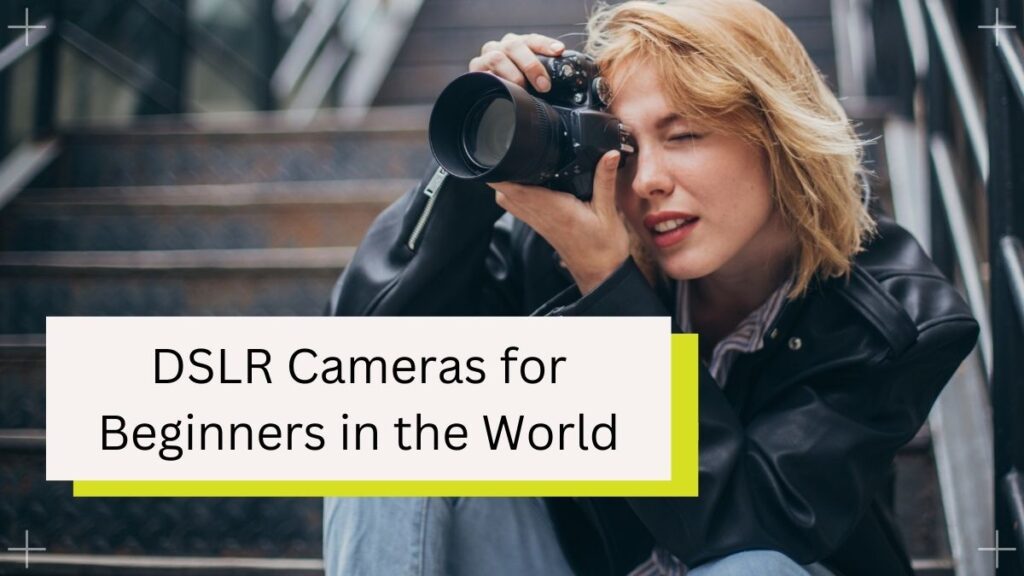
Brand Reputation and Ecosystem
1. Lens and Accessory Ecosystem: Some brands offer a wider range of lenses. And accessories, allowing users to expand and enhance their photography experience.
2. Reliability and Support: Brands known for quality construction, good customer service, and warranties. Support might be a preferred choice for some users.
Value for Money
1. Price-to-Performance Ratio: Compare the features and performance. Build quality cameras within a similar price range. Some cameras might offer more value for the money spent.
2. Long-Term Usability: Consider how well a camera will serve your needs as you progress in photography. Future-proof features can be valuable.
Reviews and Expert Opinions
1. Professional Reviews: Expert reviews and comparisons provide detailed insights into a camera. Real-world performance, strengths, and weaknesses.
2. User Feedback: Real-world user experiences are shared through reviews. Forums can offer practical insights into a camera’s usability and performance.
Specific Use Cases
1. Specialized Features: Some cameras might excel in specific areas like sports photography. (fast burst rates, advanced autofocus) or landscape photography (high resolution, dynamic range).
2. Personal Preferences: Different photographers have different preferences. Consider factors like brand loyalty, and specific needs. Or desired shooting styles that might sway your decision.
By analyzing these factors and understanding how they align with your requirements. You can determine why certain cameras might be considered better suited. Your needs compared to others in the market. It’s essential to weigh these aspects against your intended use. Preferences to make an informed decision.

Buying Guide
Buying a DSLR can be an exciting but daunting task for beginners. Here’s a comprehensive buying guide to help you navigate through the process:
Consider Your Needs and Preferences
1. Purpose: Define why you want a DSLR. Is it for casual photography, portraits, landscapes, or video shooting? Understanding your primary use will help narrow down choices.
2. Budget: Set a realistic budget range. Remember to account for more costs like lenses, accessories, and memory cards.
3. Features: Identify must-have features such as resolution. Autofocus system, video capabilities, connectivity options, and ergonomics.
Key Features to Look For
1. Sensor Size and Megapixels: Larger sensors generally offer better image quality. While megapixels contribute to image resolution, they don’t determine image quality.
2. Autofocus System: Look for a camera with a fast and accurate autofocus system. Especially if you’re interested in shooting moving subjects.
3. ISO Range and Low-Light Performance: Consider the camera’s ISO range for low-light shooting. A wider range usually results in better performance in dimly lit conditions.
4. Video Capabilities: If video is important, check for features like 4K resolution. Frame rates, and video autofocus capabilities.
5. Connectivity and Compatibility: Wi-Fi, NFC, Bluetooth, and smartphone app compatibility. can make transferring images and remote shooting more convenient.
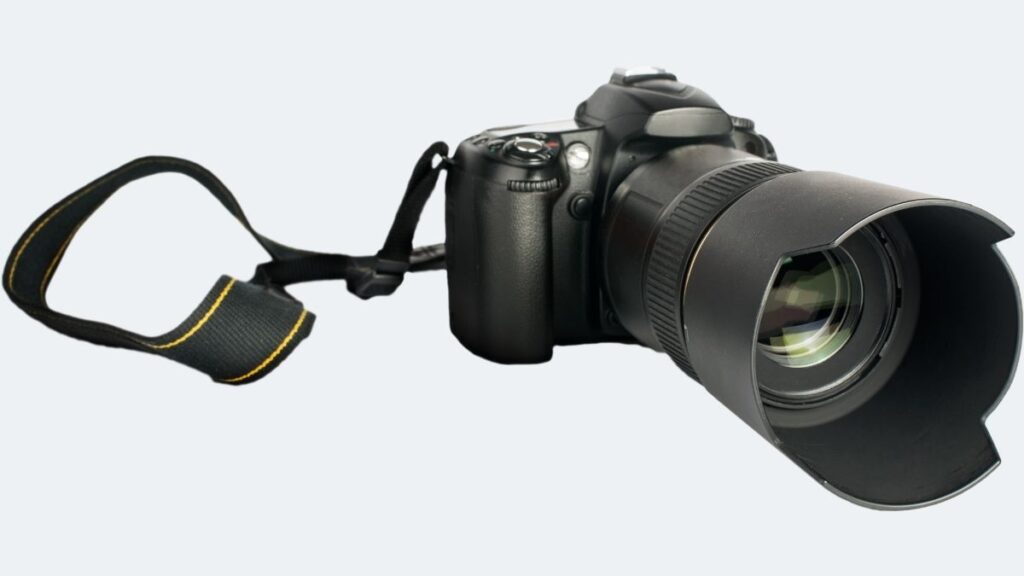
Handling and Ergonomics
1. Size and Weight: Consider a DSLR that feels comfortable and manageable in your hands, especially if you plan on carrying it around.
2. Controls and Interface: An interface with accessible controls can expedite the learning process.
3. Battery Life: Longer battery life is helpful, especially for outdoor shoots or travel photography.
Lens and Accessories
1. Lens Ecosystem: Assess the availability and variety of lenses compatible with the camera brand and model you choose. This impacts your ability to expand and experiment with different photography styles.
2. Accessories: Check for accessory compatibility, such as external flashes, and tripods. More batteries can enhance your photography experience.
Research and Reviews
1. Read Reviews: Explore professional reviews and user opinions. Comparison articles to gain insights into a camera’s real-world performance.
2. Hands-On Experience: If possible, visit a store to hold and test the cameras you’re considering. This direct experience can be valuable in shaping your decision-making process.
Brand Consideration
1. Brand Ecosystem: Some brands offer a wide range of compatible accessories and lenses. While others might have specific strengths in certain areas like autofocus, and video quality. or low-light performance.
2. Service and Support: Consider the brand’s reputation for customer service and warranties. Available support in case of issues.
Final Tips
1. Future Growth: While buying your first DSLR, think about your potential growth in photography. Choose a camera that can accommodate your learning curve and future skill improvements.
2. Don’t Rush: Take your time to research and weigh your options. Rushing into a purchase might lead to regrets later on.
By considering these factors and doing thorough research. You’ll be better equipped to select a DSLR that aligns with your needs, and preferences. Growth as a budding photographer.
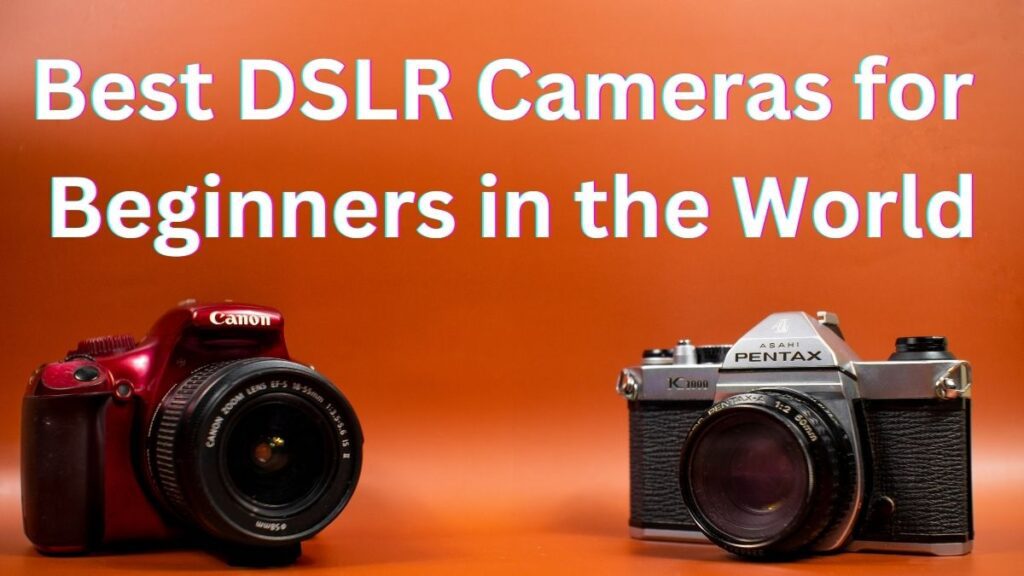
FAQ
Of course! Here’s an FAQ section that might address common queries when considering DSLR camera purchases:
1. What’s the best DSLR camera for beginners?
Answer: It depends on your preferences and needs. Cameras like Canon EOS Rebel T8i, Nikon D5600, and Sony Alpha a6100. Often recommended for beginners due to their interfaces and good performance.
2. How important is the megapixel count in a DSLR?
Answer: Megapixels contribute to image resolution but aren’t the sole determinant of image quality. Factors like sensor size and quality play a significant role in image performance.
3. Should I buy a DSLR or a mirrorless camera?
Answer: Both have their strengths. DSLRs have longer battery life and a wider lens selection. while mirrorless cameras are more compact and offer advanced features like real-time previews.
4. What’s the difference between APS-C and Full-frame sensors?
Answer: Full-frame sensors are larger, capturing more light and providing better low-light performance. Shallower depth of field compared to APS-C sensors, which are smaller.
5. Which brand of DSLR camera is the best?
Answer: There’s no single “best” brand; it’s subjective. Canon, Nikon, Sony, and Pentax are reputable brands, each with its strengths in various aspects of photography.
6. What lenses should I buy with a new DSLR?
Answer: For beginners, a versatile zoom lens (like an 18-55mm) is a good starting point. Consider prime lenses for better image quality or specialized lenses based on your interests (e.g., portrait, landscape).
7. How do I learn to use a DSLR camera effectively?
Answer: Practice is key. Experiment with different settings, read the manual, and watch tutorials online. Consider joining photography communities or workshops for guidance.
8. What should I consider besides the camera body when purchasing a DSLR?
Answer: Lenses, memory cards, camera bags, tripods, and extra batteries. Filters are essential accessories to complement your DSLR purchase.
9. Can I use DSLR lenses interchangeably between different brands?
Answer: In most cases, lenses are brand-specific. Yet, adapters might allow some compatibility. albeit with potential limitations in functionalities like autofocus.
10. How often do I need to upgrade my DSLR?
Answer: It depends on your needs and technological advancements. Upgrading is subjective; some photographers upgrade for new features. while others stick with their cameras for years.
These FAQs cover a range of common questions beginners often have when considering DSLR cameras. Always tailor your choices based on personal preferences, and intended use. And future growth in photography.

Conclusion:
Choosing the right DSLR for beginners involves considering factors. Like ease of use, image quality, features, and future expansion possibilities. The Canon EOS Rebel T8i, Nikon D5600, Sony Alpha a6100, Pentax K-70, Canon EOS 90D, and Nikon D3500. And Sony Alpha a6000 stands out among the vast array of DSLRs each offering unique features. Advantages tailored to meet the needs of budding photographers. The best camera for a beginner is one that aligns with their interests, preferences, and growth in the realm of photography.
You can see the Best 10 Cool Gadgets Under $50. Maybe you like it. Details Here



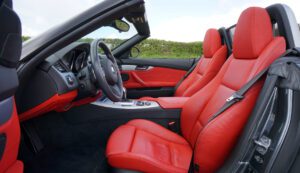




[…] The Best 7 DSLR Cameras for Beginners in the World […]